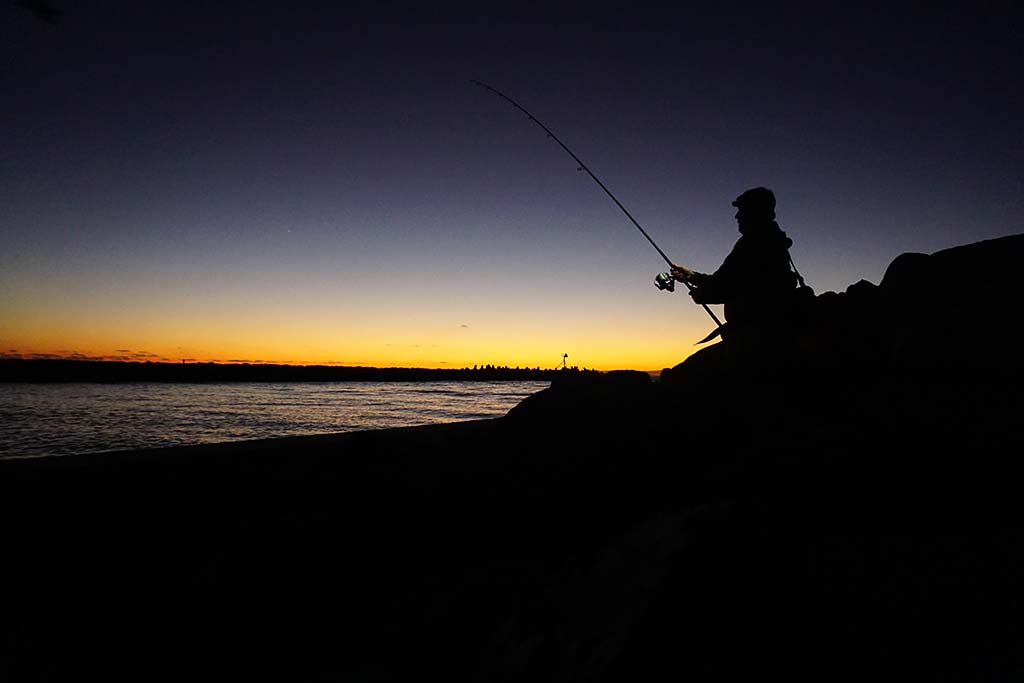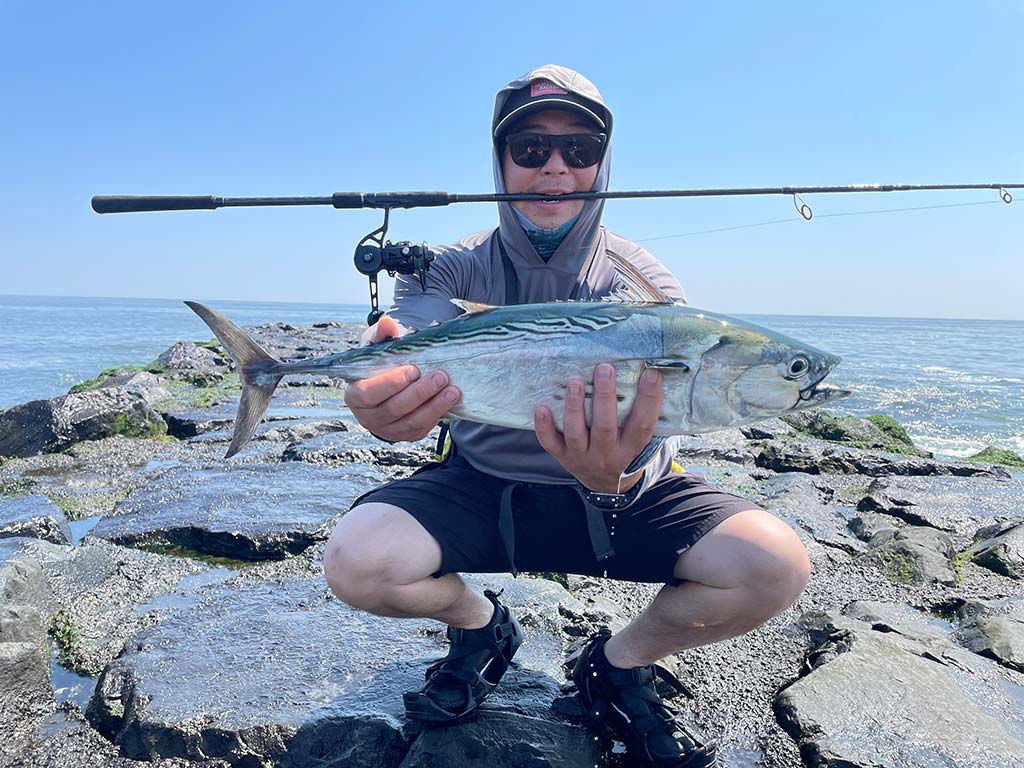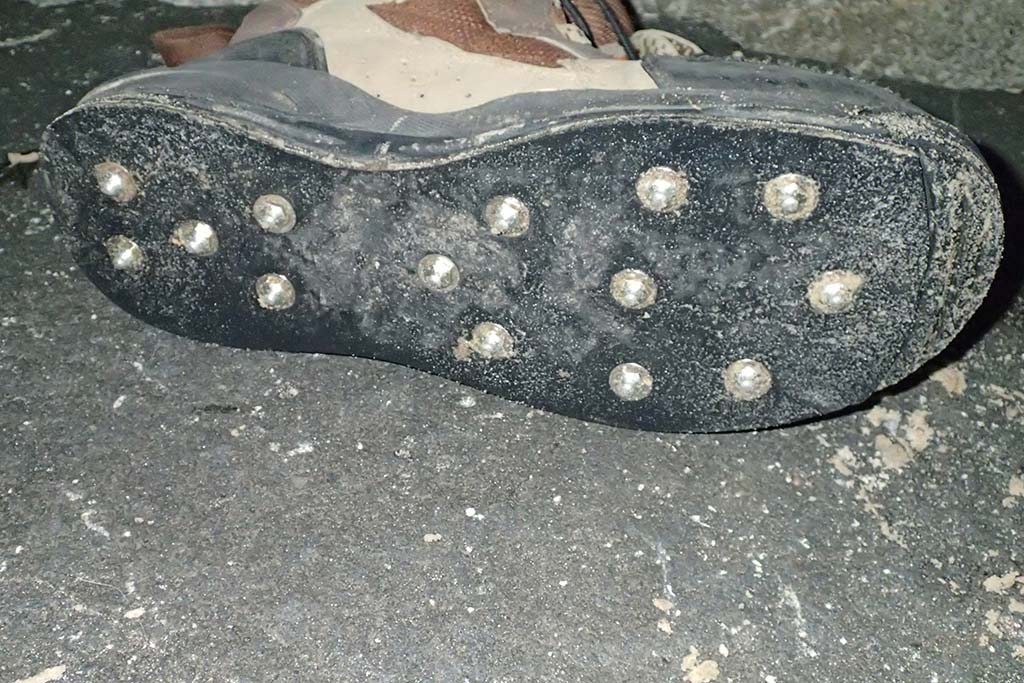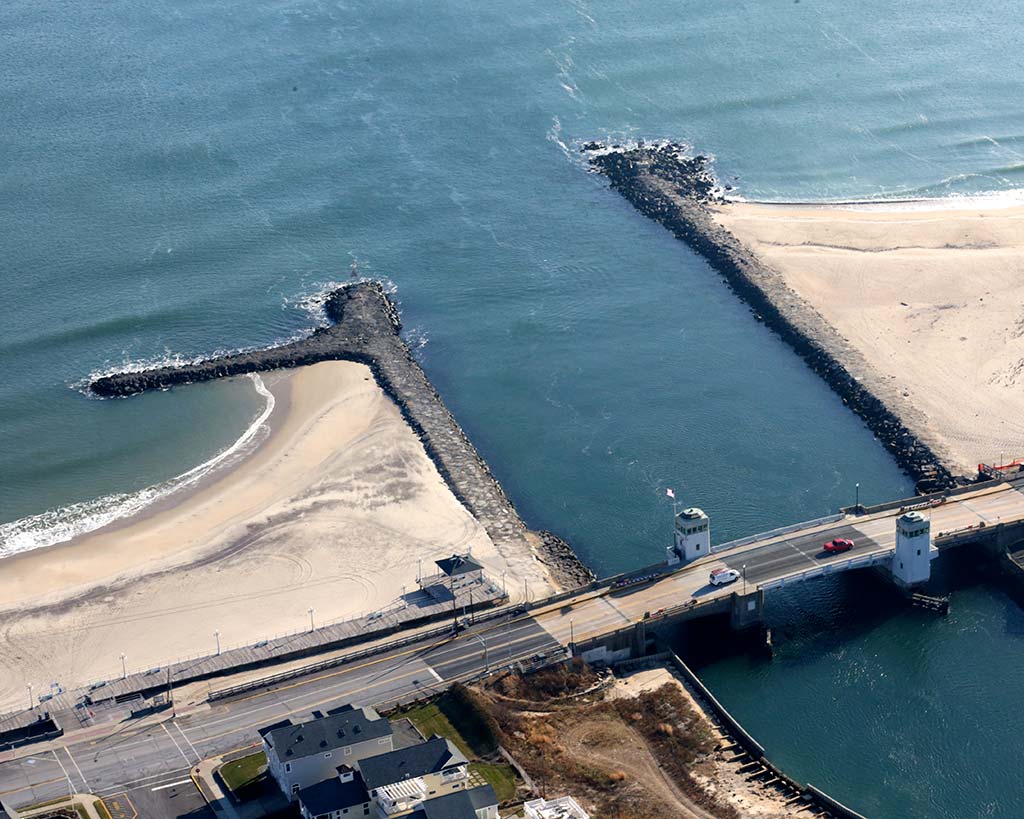
Why some piles rock more than others.
Groins and jetties are rocky outcroppings from a shoreline, usually artificially placed with the intention to reduce beach erosion, accretion, and/or storm surge (1-2). Because they’re comprised of hard structure, they attract mollusks, crabs, bait fish, and a variety of other forage species, (3-6) which in turn creates buffet lines for predatory gamefish.
Depending on the location, it is common to hear anglers use reference terms like the L-, T-, or notched-jetty. These names are coined often by shape differences, but these outcroppings can be found in a variety of heights and lengths too(7). All of these factors, including the adjacent depth and extent to which a jetty/groin has submerged rocks, can influence the degree to which it is productive. The factors impacting the largest differences in fishing output across these rocky outcroppings are their location and associated bodies of water. This is partly why those two terms (groins and jetties) are not completely synonymous.
“Groins” usually refer to what most anglers think of as general shoreline jetties, while “jetties” most accurately denote inlet jetties(8). Each category has its pros and cons.

Rock & Reel
General shoreline jetties – groins – have variable surrounding current. The flow is moderate to stagnant depending on the tide, wind, and wave activity. Excessively deep areas are not common around these areas, and descend an average max of 15 feet. The modesty of depth and current alleviate the need for added weight when bait fishing the bottom or using jigs. These factors also make bass more transient with their ambush stances. As such, fan-casting and covering ground are good techniques to adopt when fishing these structures.
Sufficient time should be spent with one’s offering closer to the rocks than further away. Upon the retrieve, the jig, eel, or plug should not be prematurely pulled from the water 10 to 15 feet out, but instead allowed to slowly linger. This is because striped bass and other gamefish will hug closer to the rocks than farther out, a concept that also applies to inlet jetties.
Generally, for trophy sized bass and fluke, inlet jetties are far more productive than general shoreline jetties. First, because inlets are connection points between the ocean and variously sized bodies of water (i.e. bays, rivers, etc.), baitfish traverse these junctions on their migrations. As a result, the extent of prey for lurking predators is typically far superior around inlets than off the front beach. Second, inlets have excess depth beyond that of general shoreline jetties. Excess depth is such an embedded characteristic of inlets that many are maintained through dredging. As much as inlet depths allow safe passage for boaters, they also provide low-light ambush points for predators.
Inlet currents also far exceed shoreline currents. Like depth, this is opportunistically exploited by both striped bass and fluke. Instead of hunting down their prey, these predators conserve their energy by allowing the currents deliver it. Finally, inlet jetties are often more extensive than normal shoreline jetties, and thus have more submerged structure. This provides a higher diversity of eddy options, which enhances the probability of a bass’s successful ambush. Hard structures, like boulders and jacks, also attract baitfish, which in turn draw predators.

Inlet Jetty Downsides
The difficulty in landing a fish and the danger of serious injury on a shoreline jetty are augmented at an inlet, especially given extensiveness in jetty length, height, and various composition, and the adjacent currents of the inlet. The heightened potential of an angler falling on the rocks of an inlet jetty is made worse by the increased chances of drowning in the strong inlet currents, especially during an outward-sweeping ebb tide.
Most dangerous are the treacherous conditions that can form at the tip of Barnegat’s north jetty as an example. These often forced anglers to tie themselves to the wooden post at its end in order to ride out a tide, which this author knows too well. In fact, I’ve fallen twice out there (once almost being swept into the inlet during outgoing current) and have had friends break collar bones from falls. The south side of that inlet is less treacherous, but still more dangerous than most general shoreline jetties. You’ll find similar trends the farther south you go (Brigantine vs. Atlantic City side of Absecon, all the way to Indian River Inlet in Delaware). Whatever pile of rocks you choose to fish, be sure to study the layout and conditions before attempting to fish.
An otherwise unbelievable story happened to me at Barnegat Inlet in 2005 involving a decaying carcass of a baby pilot whale. The putrid thing was stuck between two rocks near the jetty tip, but it could be smelled from the beach! Arriving to the tip a few minutes late for the night eeling session, a few guys grabbed the best stances first. Forced to stand on the rock adjacent to this disgusting marine cadaver was a small price to pay for a potential monster bass… at least until a larger wave came in. The whale carcass was dislodged and washed over my rock! In the process, my legs were clipped out from under me as I let out a loud grunt. During the fall, the rod smashed into a neighboring rock breaking the guides. As I laid prostrate, the carcass broke in half in the crevice behind the rock upon which I was standing. White goop oozed out with a stench too intense to bare.
At that point I noticed the other four anglers next to me (one of which I knew but with which I often competed) turned to face the source of the loud grunt I had yelled. They saw me laying on the rocks potentially hurt, but just ignored the situation, looked away, and commenced fishing. And this is before I ever wrote any “spot-burning articles” to cause any animus. I picked myself and my busted rod up and went home for the night.
The are two takeaways from this story; one, an angler should always go jetty fishing with someone they trust, and two is a reminder that jetties, especially those at inlets, are dangerous, with even unanticipated hazards. As strange as it is to say “I was hit by a dead whale,” it must be even stranger for those anglers that were swept off the same jetty in 2013 by an atmospheric pressure induced tsunami (9). Thankfully no one was seriously harmed then either.

Bring On The Bass
Striped bass can be eeled up any time after dark, but to take full advantage of an inlet jetty’s productivity an angler should focus energy to the outgoing current. Specifically, the first half hour and last half hour of the ebb current should spent at the jetty’s tip. The eel should be cast up current into the inlet, and let to swing outward and around the tip. Most strikes come when the eel is swinging out of the current just past the jetty tip. This seam, where the moving water meets the stiller ocean water, is where most of the bass lie await.
Underwater boulders near the tip, but within the actual inlet before the seam, also stage bass. That roughly 90 to 100 degrees of area, perpendicularly starting from the inlet side of the tip to just outside the current that’s straight off the tip, is the best spot on any inlet jetty! Similar to shoreline jetties, most bites come from closer to the exposed rocks than many folks might otherwise anticipate. This is due to the staging areas resulting from the submerged rocks, which are more abundant closer to the jetty. Therefore, the angler’s eel should spend most of its time within short-to-moderate casting range. Upon the retrieve, the eel should never be prematurely pulled from the water as some bass may be mere feet from where the angler stands.
It is not nearly as productive, but an angler can make the best use of other tide phases in other ways. For example, mid-outgoing current is best spent fan casting the stiller water on the ocean side of the jetty tip, while incoming may be best spent on any inland-side of the inlet jetty, especially if it terminates in a bend or tip. Just like with outgoing tide, the most productive times of incoming tide are the first and last half hours. Barnegat and Indian River Inlets are prime examples where the start and end of flood tides produce good bass on the inland sides of the jetties.
Anglers with diving- or boat-sonar-based knowledge may be privy to specific locations of submerged structure within an inlet. These spots can serve as adequate backups when the tip is crowded or its prime time is missed. For these types of spots that are within the actual inlet, the current is usually faster. This is especially true during mid-tide. In such cases, an angler will need to sink the eel faster to the strike zone before the current sweeps the line back into the rocks. To do this, a small egg sinker, or preferably a rubber-core, can be attached up-leader of the eel. A few egg sinkers and/or rubber-cores should be in an eeler’s arsenal anyway, so as to adapt to any faster-than-usual currents of spring (full moon and new moon) tides.
Of course, casters looking to plug or bucktail the rocks can incorporate many of these same eeling strategies for deployment.
Having the proper accessory gear (i.e. gaff or net, light, stringer, Korkers, phone, and fishing partner) not only enhances jetty safety, but also the probability of landing a bass once it is hooked. Obviously, having a fishing partner to help in landing the fish alleviates the multitasking endured by an otherwise solo angler. A long enough gaff/net, quality rock cleats, and bright headlight expedite the landing process (of course, with the new “slot” regulation for striped bass, the use of a gaff to land large striped bass becomes a rather moot subject).
Dr. Adam Aguiar is a professor of biology at Stockton University and manages the ecology and saltwater fishing curriculum at the Atlantic City campus. The sources for the nine numeric references listed in Dr. Aguiar’s article can be found at Footnotes: Groins Or Jetties exclusively at TheFisherman.com.
A charged phone, in waterproof containment, is of paramount importance for emergencies. It also allows for quick catch-photo-release (CPR) and the subsequently maintained health of the fish. Some anglers elect to wear inflatable PFDs (personal floatation devices). So long as they do not inhibit dexterity and movement on the rocks while fishing, these can remove the mental distractions of drowning fears and offer the best hope for survival to a fallen angler caught in an inlet ebb current.
General shoreline jetties, and especially inlet jetties, may be dangerous, but are often worth the risk for anglers who are properly prepared!




